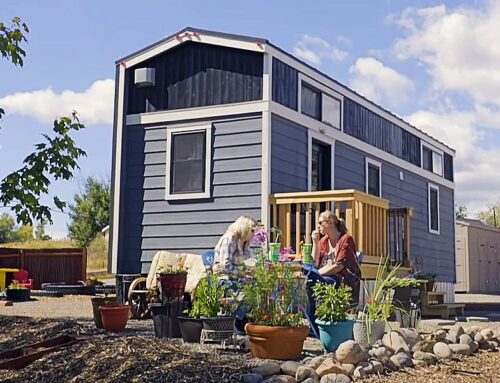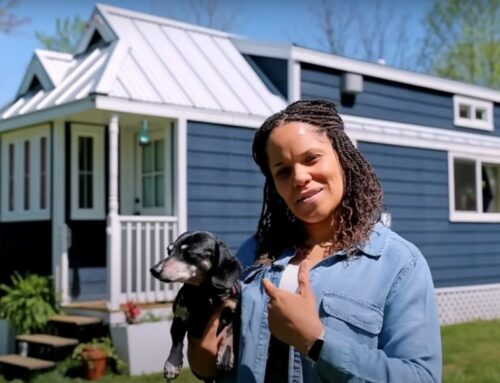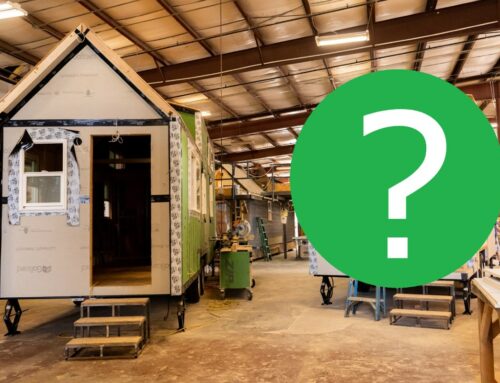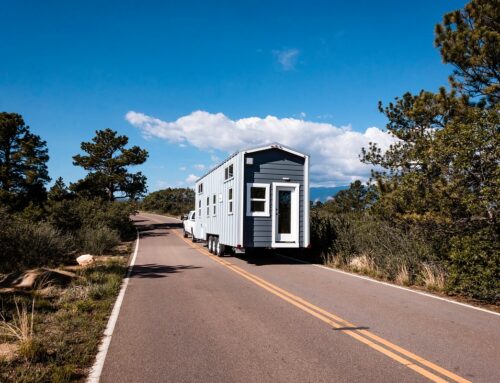One of the wonderful advantages that separates Tiny House RVs from regular RVs is that you can design them to withstand an extreme cold climate. At Tumbleweed, we’ve even designed tinies for wintering in Alaska! Below are FIVE techniques that will keep your Tumbleweed toasty, even in freezing temperatures.
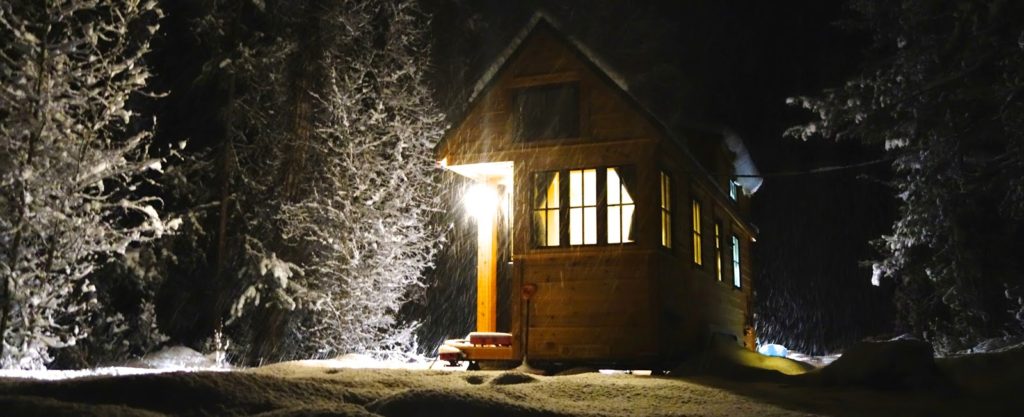
Ariel’s Tumbleweed in Wyoming winter. Photo credit: http://fynyth.blogspot.com/
1). Start with a high R-value
Let’s begin with the obvious: the more insulation you pack into your Tiny House RV, the more efficient the space will be to heat and cool. For an extreme cold climate, we use rock wool insulation. Unlike a traditional RV that has 5-7 R of insulation a Tumbleweed Tiny House RV has about 17-18 R value. Even though this is lower than home insulation in extreme cold climates, we find that because the space is so small this proves to be enough insulation.
SIPs are another high R-value option for DIYers. These panels are more expensive than traditional framing, but they are extremely energy efficient and save you hours of build time.
2). Splurge for energy efficient windows
As a Certified Green Tiny House builder, we only install energy efficient windows. You may also want to consider sticking with smaller windows in your design. We met one Alaska Tiny House RVer who decided to only have windows on the south facing side of his tiny (because the south side received the most hours of sunlight). It’s good to think ahead about your parking space as well.
3). Design your roof for snow and ice
If your future location receives a lot of snowfall, make sure you design your tiny roof to withstand the load. You may also want to reconsider skylights, as they can leak if not properly installed. You should also read this article on preventing ice dams through your roof design.
4). Prepare your appliances
A few extra cold weather purchases will save your appliances from freezing. Propane heat blankets and fresh water heated hoses are worth the money. Wood stoves will sometimes preform better with a longer chimney pipe that you can install after travel.
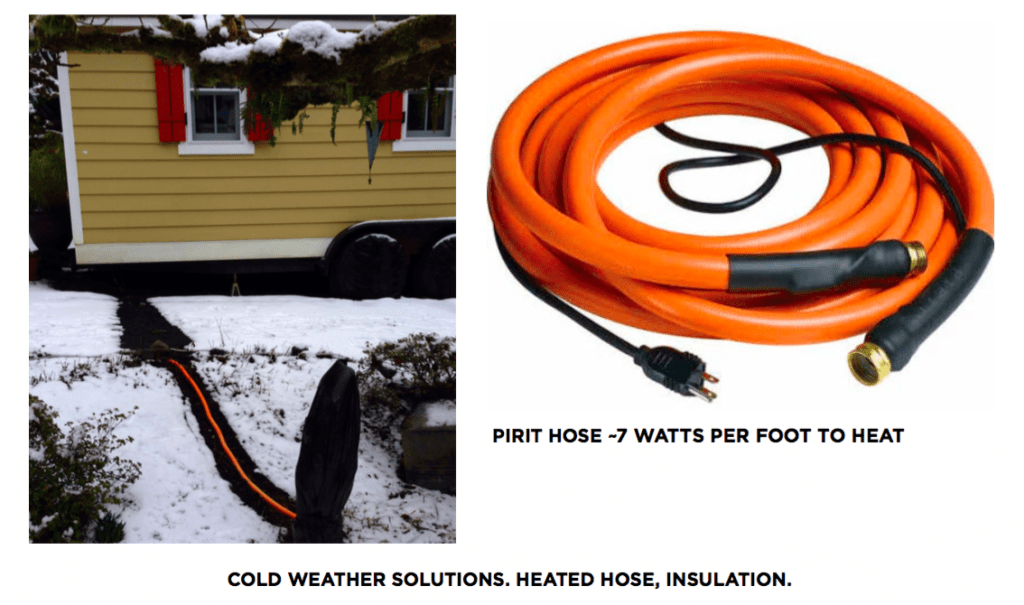
You should also develop an insulated fresh, grey and black water system if your parking spot is not already set up for cold climates. This may involve heated hoses, french drains, insulating your water spigot, etc.
5). Skirt your Tiny House RV
The coldest part of your Tiny House RV is always going to be the floor. With the Tumbleweed trailer, you will have three inches of insulation in your trailer which is covered with a vapor barrier that adds 3R of insulation. Skirting your trailer is a requirement for extreme cold climates.




